RE-ORG project overview: MUSO – Musée de société des Deux-Rives
The MUSO – Musée de société des Deux-Rives participated in the RE-ORG: Canada (Quebec) training program in 2016–17. Their mixed collection of 1500 objects was stored off site in a 100 m² space in the basement of a building belonging to the city.
Project leads: Mathieu Tremblay and Caroline Duguay
Main storage challenges
- The objects were difficult to access, and many were hidden from view (Figure 1).
- The documentation system was incomplete: there was no object inventory list and no record of object movements. Many objects had no accession number, and the storage units were not numbered.
- The storage materials and storage systems were often inadequate, and thus, the objects were not protected from dust.
- Access to the collections was logistically complex, since the storage area was in another building. Consequently, it was difficult to perform maintenance on and regular inspections of the collection. The storage area was in a basement, which posed a risk for the collection when removing objects since the path was long and included stairs. In addition, the building was old: water infiltration was noted in the basement, and there was no temperature control or relative humidity control.
- The layout of the storage units was inadequate, and there was a lack of suitable units for textiles and paintings (Figures 2 and 3). A few objects were stored on the floor.
- There was not enough small equipment (carts, tools, etc.) to work with the collections.
- Not enough personnel was assigned to the collections and storage.
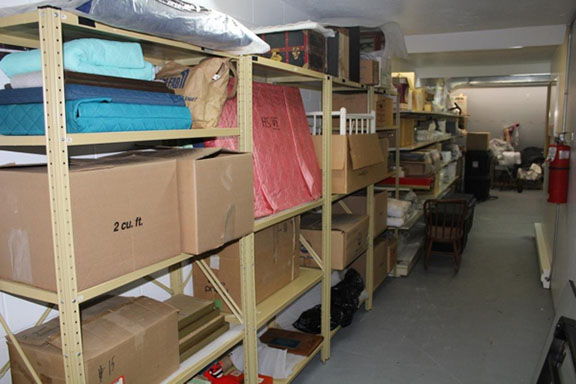
© MUSO – Musée de société des Deux-Rives
Figure 1. Before RE-ORG: objects were hidden from view. The objects had been stored in this space temporarily when the previous space had had to be vacated quickly.
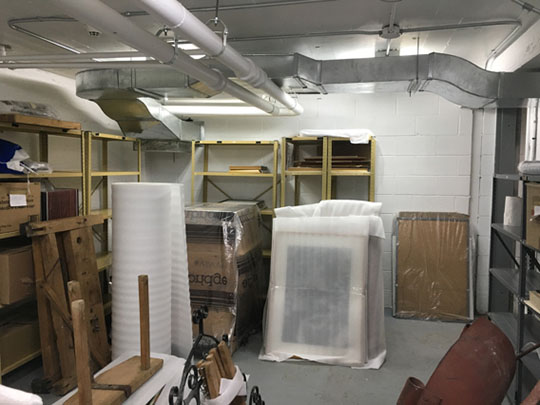
© MUSO – Musée de société des Deux-Rives
Figure 2. Before RE-ORG: the use of the space was not optimal as some objects were placed directly on the floor. The objects had been stored in this space temporarily when the previous space had had to be vacated quickly.
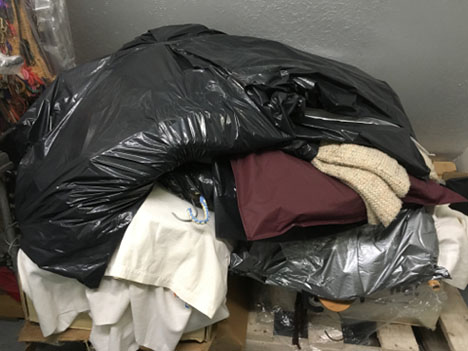
© MUSO – Musée de société des Deux-Rives
Figure 3. Before RE-ORG: improper storage of the costume collection. The objects had been stored in this space temporarily when the previous space had had to be vacated quickly.
Project details
In just over a year, the MUSO was able to make the following storage improvements:
- They designated a new room for storage on the second floor of the same building, away from the risk of water and with better environmental conditions (Figure 4). The storage units were reinstalled in the new space in a methodical and functional manner so as to maximize floor space. The objects were clearly numbered.
- They relocated all the objects from the basement as well as any other objects designated for storage that had been held in the museum. The objects were grouped by material, size and function and arranged on the shelves in such a way as to reduce handling when removing them from the units.
- They added dozens of new transparent plastic containers (food-grade bins) to hold textiles, an archaeological collection and a number of small objects. This made it possible to group items together, to protect objects from dust and water and to move them more easily (Figures 5–9).
- They used museum-quality materials (tissue paper, polyethylene foam, acid-free paper and string, etc.) to cover shelves, wrap a textile collection and create dividers between paintings in the same customized storage unit.
- They lifted all objects off the floor.
- They covered the windows of the new space with corrugated plastic panels to reduce sunlight.
- They purchased the necessary small equipment (such as a cart with two sturdy plastic shelves, a stepladder and a small vacuum cleaner). Aside from a few tools and devices, all material that was not part of a collection and that was there prior to the reorganization was moved elsewhere. The space is now used only for storing the collections.
- They took the opportunity to complete the photographic documentation of the objects.
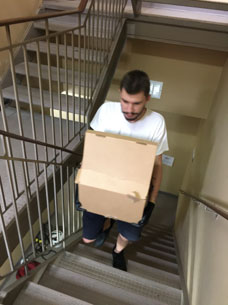
© MUSO – Musée de société des Deux-Rives
Figure 4. During
RE-ORG: moving the collections out of the basement and into a more suitable room on the second floor of the building.
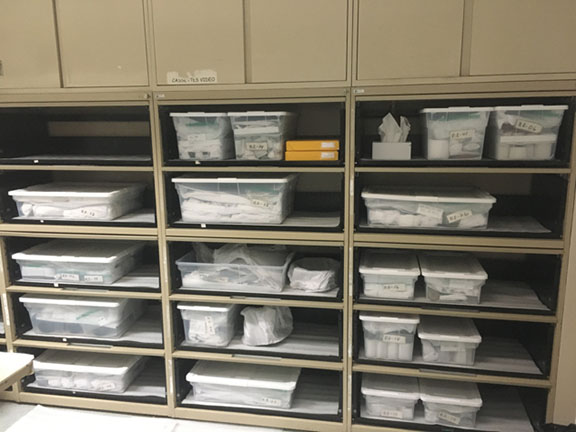
© MUSO – Musée de société des Deux-Rives
Figure 5. After RE-ORG: storage of the archaeological collections.
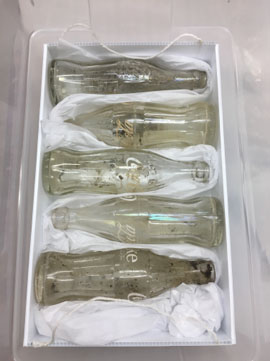
© MUSO – Musée de société des Deux-Rives
Figure 6. After RE-ORG: storage of the archaeological collections. An example of objects stored in bins.
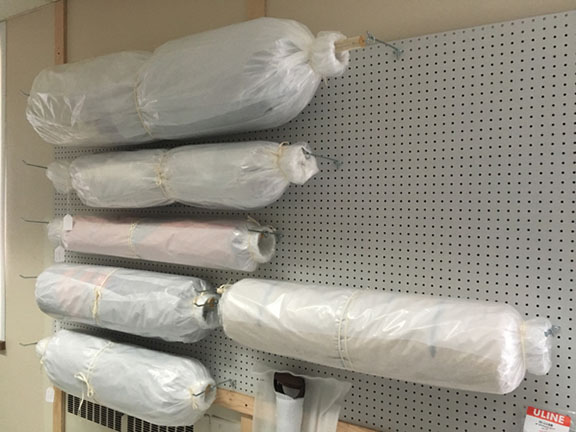
© MUSO – Musée de société des Deux-Rives
Figure 7. After RE-ORG: rolled storage for textiles.
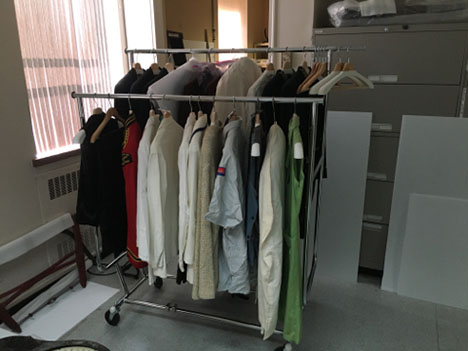
© MUSO – Musée de société des Deux-Rives
Figure 8. After RE-ORG: costume storage solution.
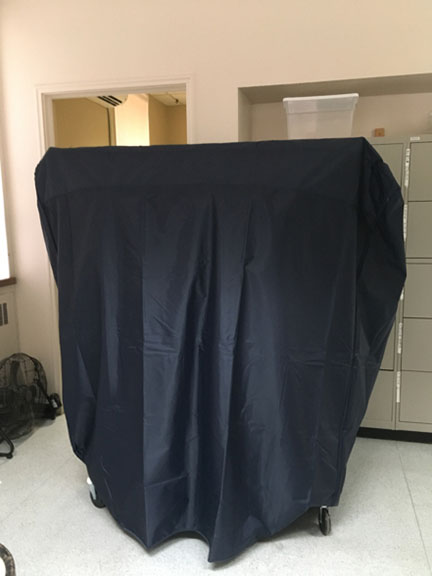
© MUSO – Musée de société des Deux-Rives
Figure 9. After RE-ORG: costume storage solution with dust protection.
The project was completed in 150 days by 2 team members during phases 1–3 and no more than 6 team members during phase 4 (Table 1).
| RE-ORG phase | Number of days to complete | Number of team members |
|---|---|---|
| 1. Getting started | 30 | 2 |
| 2. Storage condition report | 30 | 2 |
| 3. Storage action plan | 30 | 2 |
| 4. Storage reorganization implementation | 60 | 2 to 6, depending on the task |
The RE-ORG project cost $36,474. More than half of this amount was allocated to staff time and external contracted services (Table 2). Less than a quarter of the budget was spent on tools and storage furniture. The MUSO was also successful in securing a $9,987 grant from the Museums Assistance Program for the project.
| Budget item | Amount (CAN$) |
|---|---|
| Staff time | 32,438 |
| Tools, supplies and materials | 3,359 |
| Storage furniture | 478 |
| External services (such as contractors) | 200 |
| Total project cost | 36,474 |
Based on the RE-ORG Self-evaluation Tool for Collections in Storage (PDF Version), the MUSO made improvements in all four RE-ORG components: “management,” “building and space,” “collection” and “furniture and small equipment.”
The results in Table 3 show that the “collection” and “management” components saw the largest improvements, with respective increases of 35% and 33% (Figure 10).
| RE-ORG component | Score (before) | Score (after) |
|---|---|---|
| Management (maximum of 42 points) | 13 | 23 |
| Building and space (maximum of 54 points) | 26 | 35 |
| Collection (maximum of 51 points) | 13 | 32 |
| Furniture and small equipment (maximum of 33 points) | 22 | 25 |
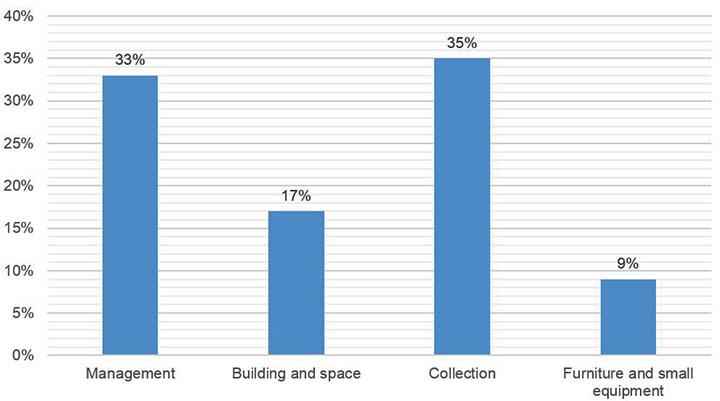
© Government of Canada, Canadian Conservation Institute. CCI 132794-0043
Figure 10. Graph illustrating the percentage of improvement to the scores for the RE-ORG self-evaluation tool, calculated by comparing scores before and after the storage reorganization project.
Description of Figure 10
| RE-ORG component | Percentage of improvement |
|---|---|
| Management | 33% |
| Building and space | 17% |
| Collection | 35% |
| Furniture and small equipment | 9% |
Lessons learned
Based on the experience of the MUSO, the following should be considered in future RE-ORG projects:
- A little can go a long way.
- A number of elements of the RE-ORG method will be useful in the future for our institution and our local partners.
- It is important to take the reorganization one step at a time and to see it as something positive instead of as a burden.
- The network (museums, colleagues) developed during the RE-ORG project is a good asset.
- Every positive action is a plus for the collections and their storage.
- Look at the improvements in relation to your human and financial resources (do not make comparisons with museums that have many more resources).
- With a little creativity, it is possible to design low-cost material for collections storage. (Museum and archival material suppliers’ catalogues may provide some ideas.)
Additional resources
- Video of Mathieu Tremblay’s presentation at the 2017 RE-ORG: Canada (Quebec) one-day conference, RE-ORG : Canada (Québec) – Rapport sur l’état des réserves : Musée de société des Deux Rives (in French only).
- ICCROM web page describing the RE-ORG method.